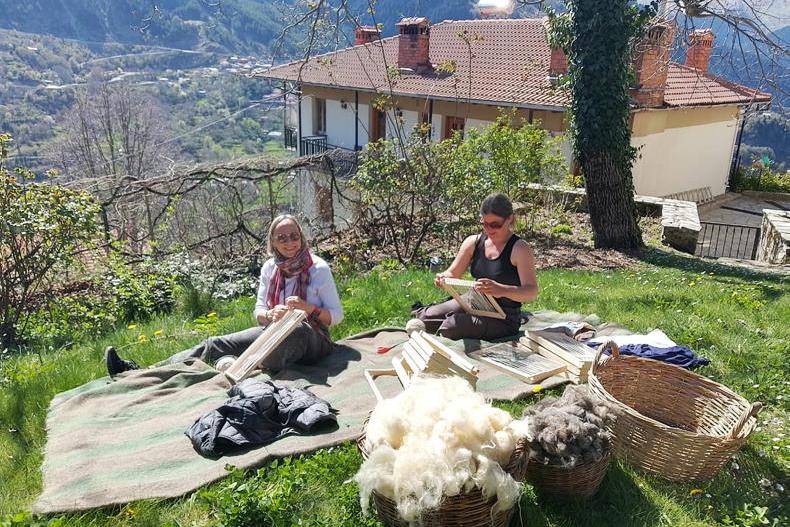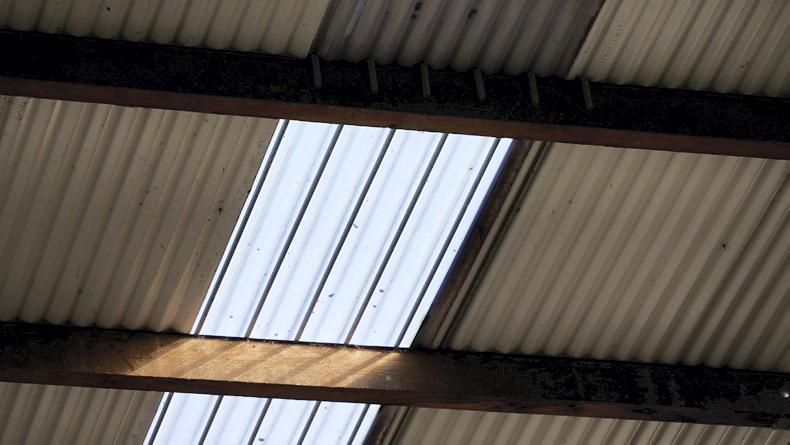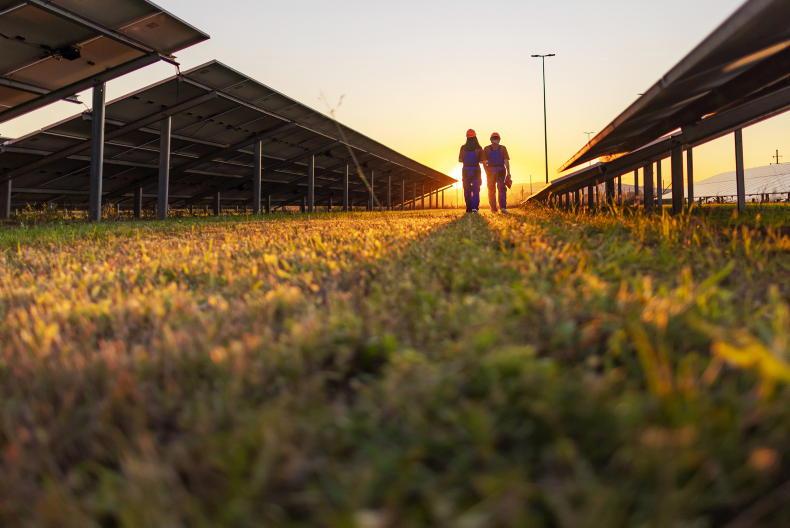The takeaway from the arrival of two new Chinese cars from the BYD range is that the brand aims to make progress in the Irish market, while more established brands face a growing challenge.
With two new aquatic-named, fully electric car models, BYD can be expected to make more than waves on the Irish new car market in 2024.
BYD is rated at China’s largest electric car manufacturer and the company’s history originates in the battery production business before it entered the car market.
So, in a sense, it’s almost similar to an old-school engine company deciding to make cars, except that BYD is not that particularly old.
For the Irish market, BYD has teamed up with one of the country’s longest-established car importers, Motor Distributors, the Mercedes-Benz importer into Ireland for more than half a century and the company that originally provided the first assembly plant for the Volkswagen Beetle, outside of Germany, in Ireland in 1950.
The two new BYD models are very different style and personality. The BYD Dolphin is a small family-style hatchback that, for me, makes so much senses as an electric option.
The BYD Seal on the other hand is a more sporty-looking car that is now providing a real challenge for the Tesla Model 3, in terms of specification, range and price.
What I liked about the BYD Dolphin was the ease of driving. The car has a range of over 420km on a fully charged battery, which is reasonable for a car of its size. This family hatchback is powered by a 60.4kWh Blade battery that claims a 30% to 80% fast-charging speed of about half an hour.
The interior of the car is reasonably spacious, and the sports-type seats and headrests are made from vegan leather.
The front seats have six-way electric adjustment for the driver and four-way electric adjustment for the front passenger.

The dash area on the BYD Seal is dominated by the large infotainment screen that can be rotated from landscape to portrait.
There’s good legroom for rear-seat passengers.
The rear-seat 60:40 split allow the base 345-litre boot to expand to 1,310 litres when both seats are folded flat.
BYD includes what it calls a 3.3kW external discharge “vehicle-to-load” facility, which can be used to charge accessories and power external devices.
The car is very well-equipped in terms of safety features and comes with a five-star Euro NCAP rating.
The infotainment screen in the front is more compact than with the larger Seal model and there are tactile buttons for some of the controls that are less distracting for the driver, as a result.
Entry prices start at €29,318, or £26,195 in Northern Ireland, making this car a more affordable electric car option for those who want to dip into the market.
Drive the car with some understanding of its abilities, and this is a car that I think you will get very comfortable with.

The BYD Seal is comfortable in terms of seating and features, but low for entry and exit and I’m not sure how it would cope with ground clearance on grassy rural roads.
The larger BYD Seal is a very different type of car. The lower seating position and more sports car-type feel, along with the smaller capacity boot, were not my preference.
This is despite the fact that the car has an impressive 570km-rated range, that’s nearly achievable.
The fast-charging ability at motorway stops is impressive and, overall, the car performed well in terms of battery range and returned an economy figure that was mid-way between the combined driving and urban driving ratings at 15.5kWh/100km over more than 700km of a test drive programme.
The Seal is a more upmarket option with a bigger 82.5kWhr battery, more features as standard and the resultant higher price. Entry prices, after grants, start at €44,036 or £45,695 in Northern Ireland for the rear-wheel-drive versions.
The BYD Seal had some features that take a little getting used to, most of all the location of the director indicator stick on the right side of the steering wheel. It took my brain a few days to get used to this and a further few days the following week to untrain my brain and revert to a more usual left-side location indicator stick.

The dash area on the BYD Dolphin is more compact and user-friendly with some tactile buttons for ease of control of some features, making it a very easy car to drive.
I drove significantly longer with the Seal than with the Dolphin, so I had more scope to enjoy its cruise control facilities.
That too was a little annoying because although I had set the unit at 100km/hr on the motorway to be most efficient, the car’s heads-up display kept switching between 99km/hr and 101km/hr on the display, which can be distracting.
With both cars, I found that the speed limit sign recognition system was a little unreliable. It didn’t always pick up the correct readings and the subtle but persistent warning sounds were a reminder of that. While perhaps I should have turned this feature off, from a test point of view, I was interested to evaluate how it performed.
Solar panels
We can’t dismiss electric car options anymore because they are improving in terms of range and BYD has proven that. The option of an electric car needs to be considered, especially on farms where Department of Agriculture grant-aided solar panels are used or planned. Combine both and there is an opportunity for very affordable motoring.
All BYD models come with a six-year car warranty and an eight-year warranty on the batteries. That latter warranty has become standard across many car brands and has yet to be fully tested.
BYD sales of battery electric-only cars have gone virtually zero in 2023 to over 850 so far in 2024.

The BYD Dolphin in an entry-level all-electric family hatchback battery electric car that’s versatile and spacious with entry prices starting at €29,318 or £26,195 in Northern Ireland, after Government grants.
The BYD dealer network is now expanding, while the cars are too new to the market to calculate their real running costs. And now there’s a hybrid pickup on the way.

The family hatchback BYD Dolphin has a spacious boot and is a versatile small car.
What is certain is that some new battery electric car brands will not survive this new motoring world, and neither will some traditional brands survive this period of motoring transition.
I expect that with its foundations in the battery production process, BYD will last.
The takeaway from the arrival of two new Chinese cars from the BYD range is that the brand aims to make progress in the Irish market, while more established brands face a growing challenge.
With two new aquatic-named, fully electric car models, BYD can be expected to make more than waves on the Irish new car market in 2024.
BYD is rated at China’s largest electric car manufacturer and the company’s history originates in the battery production business before it entered the car market.
So, in a sense, it’s almost similar to an old-school engine company deciding to make cars, except that BYD is not that particularly old.
For the Irish market, BYD has teamed up with one of the country’s longest-established car importers, Motor Distributors, the Mercedes-Benz importer into Ireland for more than half a century and the company that originally provided the first assembly plant for the Volkswagen Beetle, outside of Germany, in Ireland in 1950.
The two new BYD models are very different style and personality. The BYD Dolphin is a small family-style hatchback that, for me, makes so much senses as an electric option.
The BYD Seal on the other hand is a more sporty-looking car that is now providing a real challenge for the Tesla Model 3, in terms of specification, range and price.
What I liked about the BYD Dolphin was the ease of driving. The car has a range of over 420km on a fully charged battery, which is reasonable for a car of its size. This family hatchback is powered by a 60.4kWh Blade battery that claims a 30% to 80% fast-charging speed of about half an hour.
The interior of the car is reasonably spacious, and the sports-type seats and headrests are made from vegan leather.
The front seats have six-way electric adjustment for the driver and four-way electric adjustment for the front passenger.

The dash area on the BYD Seal is dominated by the large infotainment screen that can be rotated from landscape to portrait.
There’s good legroom for rear-seat passengers.
The rear-seat 60:40 split allow the base 345-litre boot to expand to 1,310 litres when both seats are folded flat.
BYD includes what it calls a 3.3kW external discharge “vehicle-to-load” facility, which can be used to charge accessories and power external devices.
The car is very well-equipped in terms of safety features and comes with a five-star Euro NCAP rating.
The infotainment screen in the front is more compact than with the larger Seal model and there are tactile buttons for some of the controls that are less distracting for the driver, as a result.
Entry prices start at €29,318, or £26,195 in Northern Ireland, making this car a more affordable electric car option for those who want to dip into the market.
Drive the car with some understanding of its abilities, and this is a car that I think you will get very comfortable with.

The BYD Seal is comfortable in terms of seating and features, but low for entry and exit and I’m not sure how it would cope with ground clearance on grassy rural roads.
The larger BYD Seal is a very different type of car. The lower seating position and more sports car-type feel, along with the smaller capacity boot, were not my preference.
This is despite the fact that the car has an impressive 570km-rated range, that’s nearly achievable.
The fast-charging ability at motorway stops is impressive and, overall, the car performed well in terms of battery range and returned an economy figure that was mid-way between the combined driving and urban driving ratings at 15.5kWh/100km over more than 700km of a test drive programme.
The Seal is a more upmarket option with a bigger 82.5kWhr battery, more features as standard and the resultant higher price. Entry prices, after grants, start at €44,036 or £45,695 in Northern Ireland for the rear-wheel-drive versions.
The BYD Seal had some features that take a little getting used to, most of all the location of the director indicator stick on the right side of the steering wheel. It took my brain a few days to get used to this and a further few days the following week to untrain my brain and revert to a more usual left-side location indicator stick.

The dash area on the BYD Dolphin is more compact and user-friendly with some tactile buttons for ease of control of some features, making it a very easy car to drive.
I drove significantly longer with the Seal than with the Dolphin, so I had more scope to enjoy its cruise control facilities.
That too was a little annoying because although I had set the unit at 100km/hr on the motorway to be most efficient, the car’s heads-up display kept switching between 99km/hr and 101km/hr on the display, which can be distracting.
With both cars, I found that the speed limit sign recognition system was a little unreliable. It didn’t always pick up the correct readings and the subtle but persistent warning sounds were a reminder of that. While perhaps I should have turned this feature off, from a test point of view, I was interested to evaluate how it performed.
Solar panels
We can’t dismiss electric car options anymore because they are improving in terms of range and BYD has proven that. The option of an electric car needs to be considered, especially on farms where Department of Agriculture grant-aided solar panels are used or planned. Combine both and there is an opportunity for very affordable motoring.
All BYD models come with a six-year car warranty and an eight-year warranty on the batteries. That latter warranty has become standard across many car brands and has yet to be fully tested.
BYD sales of battery electric-only cars have gone virtually zero in 2023 to over 850 so far in 2024.

The BYD Dolphin in an entry-level all-electric family hatchback battery electric car that’s versatile and spacious with entry prices starting at €29,318 or £26,195 in Northern Ireland, after Government grants.
The BYD dealer network is now expanding, while the cars are too new to the market to calculate their real running costs. And now there’s a hybrid pickup on the way.

The family hatchback BYD Dolphin has a spacious boot and is a versatile small car.
What is certain is that some new battery electric car brands will not survive this new motoring world, and neither will some traditional brands survive this period of motoring transition.
I expect that with its foundations in the battery production process, BYD will last.















SHARING OPTIONS